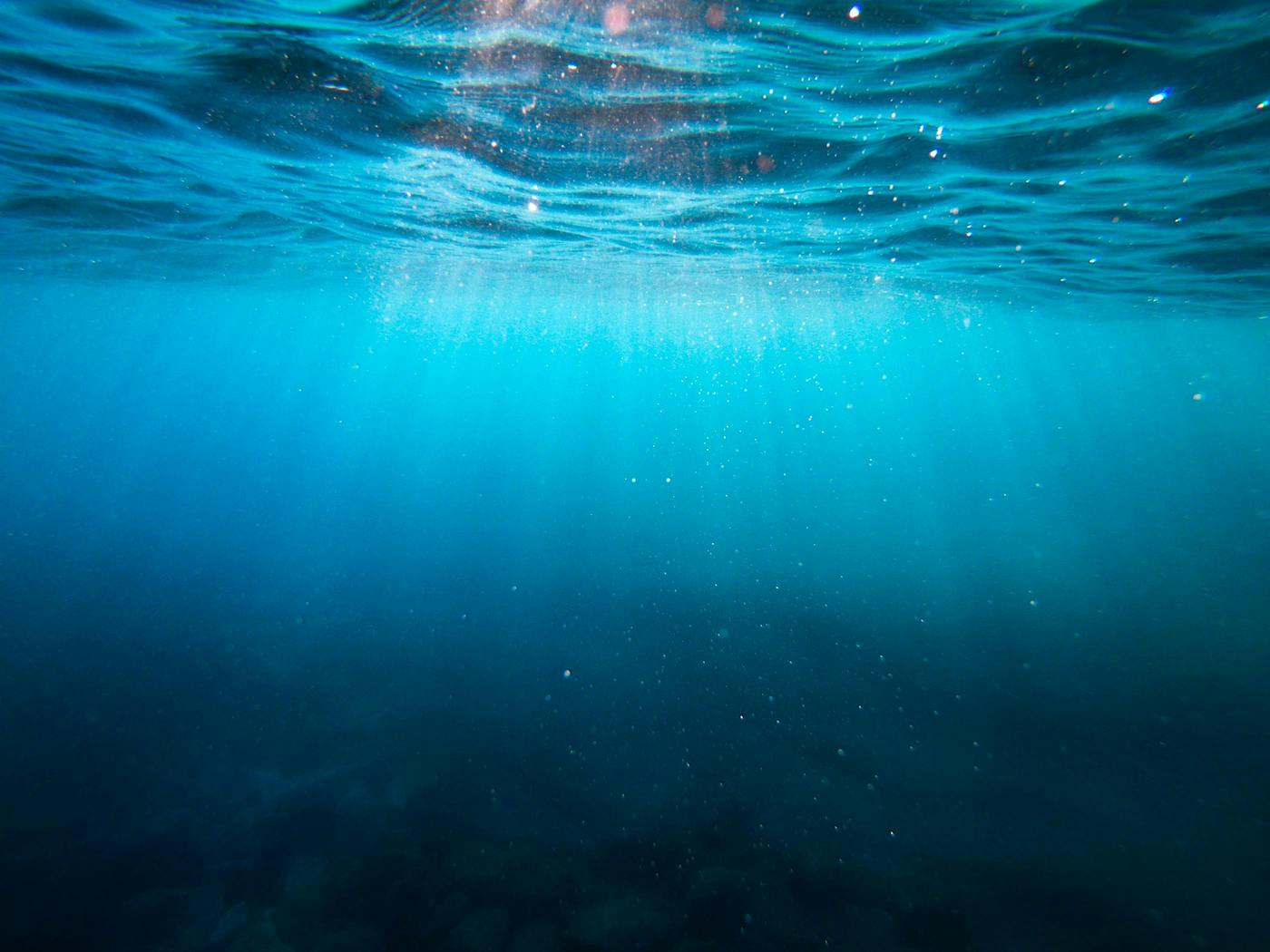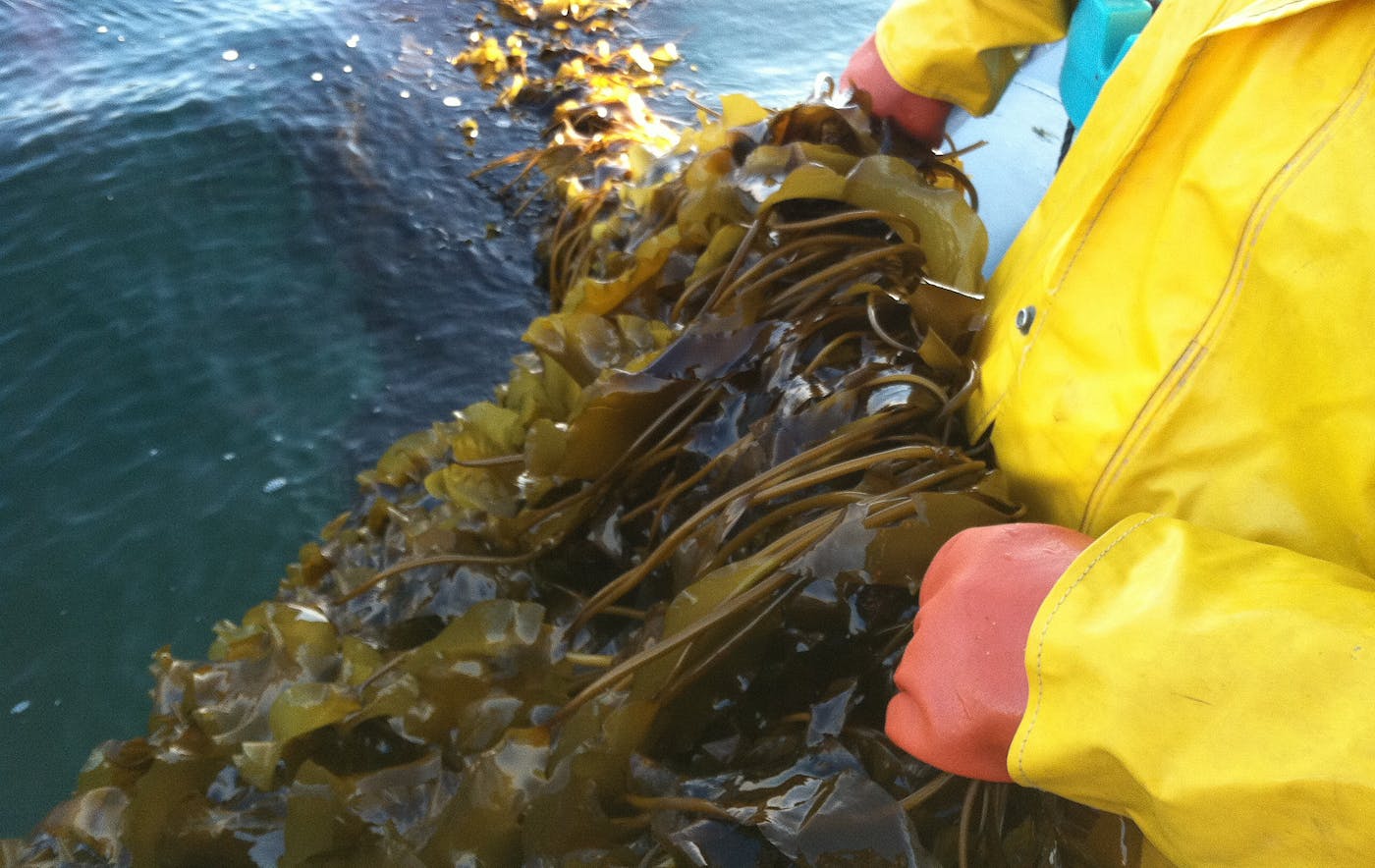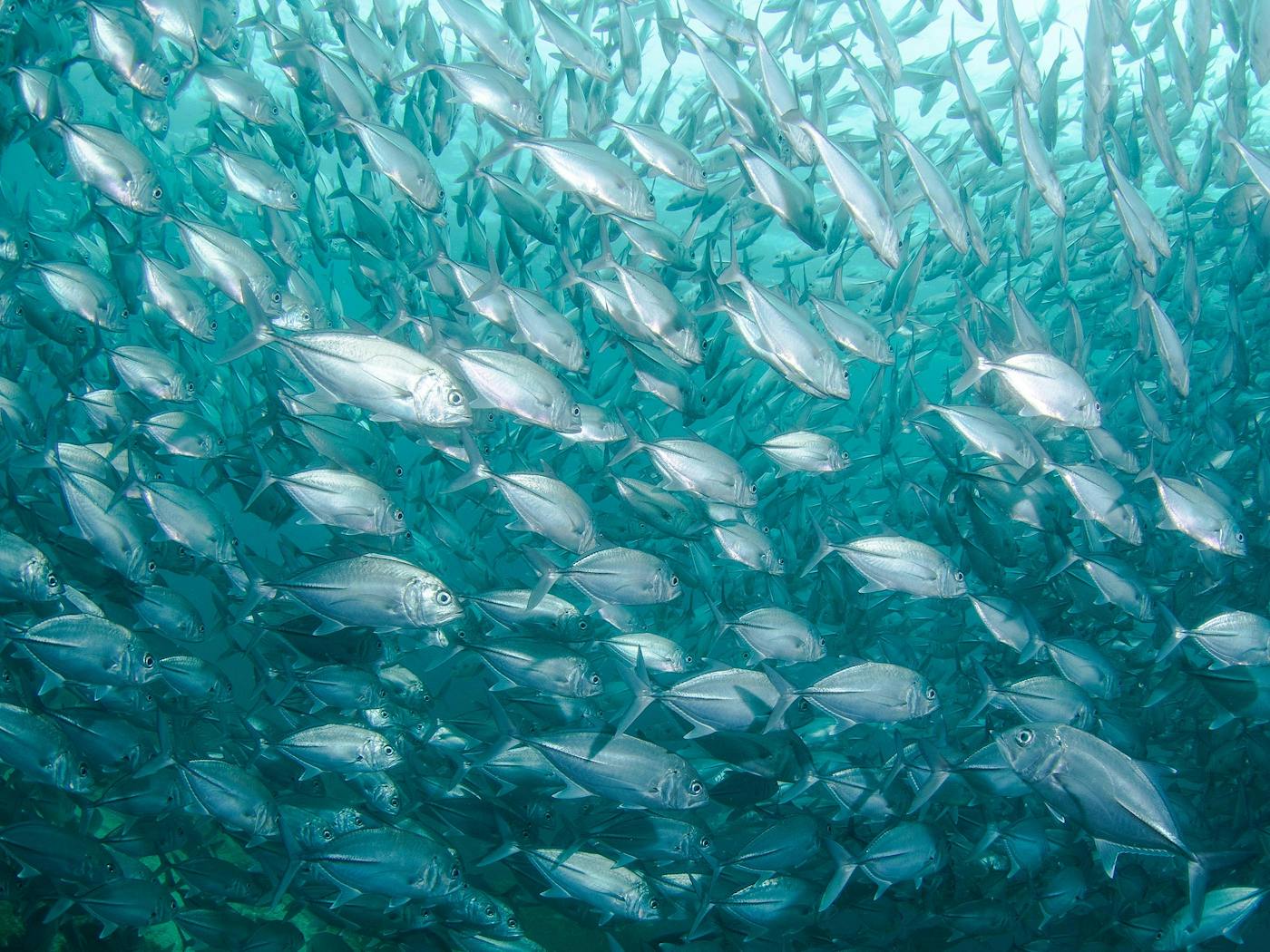
A Look at Our Oceans 2050 Impact Vision
Our 2050 Oceans Impact Vision
Builders Vision is an impact platform dedicated to supporting people and organizations building a more humane and healthy planet. Through our oceans strategy, as in much of our work, we take a long-term systems approach to finding solutions. This includes using multiple tools and relying on a broad network of non-profit and private sector partners.
Our approach takes the long view, but the urgency of the climate crisis requires we move with agility and speed now. We are encouraged by the early results we are seeing in our “Oceans 2050 Impact Vision” work, but we come at this work with open minds, lots to learn and a willingness to partner and collaborate to drive meaningful solutions.
Oceans Keep Our Planet, People and Economy Healthy
Our oceans play a critical role in the health of our planet. Their stability is vital for long-term human health. They connect, sustain and help our planet's ecosystem thrive. Not only do our oceans regulate our climate, they are also a critical protein source for over 3 billion people; and provide over 41 million people worldwide with jobs, the vast majority in developing countries.
Our Oceans Face Threats
According to the United Nations Intergovernmental Panel on Climate Change, since 1970 the oceans have absorbed over 90 percent of excess heat trapped in Earth's climate system. This warming is causing significant changes in currents and sea levels, which affect the health of marine species, nearshore and deep ocean ecosystems, and weather systems and communities dependent on ocean-related jobs.
Climate change is the greatest threat facing our oceans, but other challenges have depleted ocean resources and impacted ocean habitats as well. These threats include overfishing and destructive fishing practices, which have considerably reduced the health of fish stocks all over the world. This while the U.N. Food and Agriculture Organization reports that seafood will play an increasingly important role in effectively addressing food and nutritional security for 10 billion people by 2050.
Additionally, land-based pollution has created vast dead zones in the oceans. In fact, some studies show that plastic pollution will occupy more space in the ocean than marine species if efforts are not made to curb plastic production and use.
These global shifts are impacting not only our oceans, but ecosystems and communities across the globe. We must act now to improve and invest in our oceans.
Our Oceans Need Our Focus
We believe healthy ocean ecosystems are a pillar of a global environmental recovery, a driver of economic growth, and a foundation for food and climate security and human health. As an impact platform, the Builders Vision team developed an integrated philanthropic and investment approach entitled the “2050 Impact Vision,” taking a systems approach to helping ensure our ocean ecosystems:
- Are resilient and balanced; and ocean resources are abundant
- Meaningfully contribute to climate resilience and emissions reduction targets
- Support food and nutritional security

How We Approach the Work
Builders Vision has been supporting non-profits and research organizations through philanthropy, entrepreneurs and breakthrough companies through direct investment as well as fund-to-fund investments to develop scalable solutions to the challenges that threaten the health of our oceans. These visionaries, innovators, and collaborators are working on significant advances in science and technology, exploring new business models, and advocating for policy change.
In our work with these partners, and with a particular focus on fisheries management, aquaculture, and climate resilience for coastal ecosystems, we are investing in scalable solutions for restorative benefits to oceans ecosystems for generations to come.
Strategy Spotlight: Kelp Restoration and Ecosystem Resilience

Kelp forest @RalphPacePhotography

Scuba diver examines urchins on sea floor. @RalphPacePhotography

Fisherman harvests urchins. @RalphPacePhotography

Marine biologist examines urchins. @RalphPacePhotography
In the last decade, the world’s kelp forests have been devastated by climate change, which first warmed their cool water habitat. The warmer water in turn contributed to spreading disease to sunflower starfish, the critical natural predators of purple sea urchins. This enabled the purple sea urchins to multiply and devour massive portions of kelp forests, particularly those off the coast of Northern California.
In 2021, Builders Vision made a direct investment in Urchinomics through its Rising Tides impact investment fund. The investment was designed to scale the company’s approach to hiring divers to remove overgrazing sea urchins from the sea floor, moving them to land-based aquaculture facilities and then ranching the urchins so that they can be sold to restaurants globally. The removal of the urchins from the sea floor facilitates kelp restoration in those habitats. Additionally, Urchinomics reinvests a portion of their proceeds to fund the restoration of kelp beds.
Urchinomics’ model works to create jobs in urchin removal and ranching, provide a sustainable source of seafood, and restore the kelp forests. “We chose to build a restorative business model because we figured we as humanity have dug a hole sufficiently deep for ourselves that sustainability alone isn't going to get us out of it,” said Urchinomics CEO Brian Tsuyoshi Takeda . “We built the entire business model around the idea that the more we profit, the better the environment becomes.”
To inform the field, the Builders Initiative Foundation also gave a grant to The Nature Conservancy to fund broadly shared research and technology for kelp recovery and restoration including efforts to breed, raise and release sunflower starfish back to the kelp forests and begin to restore balance to the ecosystem.
Strategy Spotlight: Seaweed as a Climate, Ocean Health, and Food Supply Solution
The Safe Seaweed Coalition estimates that seaweed could contribute 10% of the world’s food supply using just 0.03% of the ocean’s surface, could absorb 135 million metric tons of carbon a year by 2050, and 30% of all nitrogen entering the oceans from land-based pollution improving water quality.
Rising Tides also invested in Atlantic Sea Farms, the first commercially viable seaweed farm in the United States, which has today expanded to represent a growing community of partner farmers, harvesting over 85% of the line grown seaweed in the country. Their goal is to provide new “food sources that positively impact the economic and environmental health of our coastal communities.”
Atlantic Sea Farms works with kelp (or seaweed) farmers in Maine helping to expand opportunities for Maine’s fishing community while improving water quality and carbon removal. With the seaweed, Atlantic Sea Farms develops myriad food products sold in grocery stores and restaurants that offer a healthy source of protein and calcium. As CBS Sunday Morning shares in their story, seaweed is on pace to be bigger than potatoes by 2051.
“Our company is laser focused on providing supplemental income opportunities for our coastal communities at a time when climate change and regulations are making the lobster fishery increasingly volatile," said Briana Warner, Atlantic Sea Farms President & CEO. "In the past two years, we have built a dynamic team of mission-driven specialists in every part of our business - which has allowed us to work with talented partner farmers from throughout Maine’s lobstering community. We are building an entirely unique and regenerative supply chain and bringing all new products to market.”
In 2021, Rising Tides also invested in Oceanium helping to scale its innovative biorefinery technology and product development to process sustainably farmed seaweed at scale and accelerate a sustainable seaweed farming industry.
Oceanium is working to create multi-solution approaches that include mitigating climate change, ensuring food security, and creating jobs. Most significantly, they are developing a promising biodegradable packaging solution utilizing seaweed. Initial composting tests found the packaging material to be degradable over a period of weeks versus decades.
“Our innovative biorefinery process is built on decades of experience and provides the technology needed to extract the maximum value from the seaweed,” said Dr. Charlie Bavington, Oceanium Co-founder and Chief Technology Officer. “By developing products which are in very high demand including plant-based food ingredients and home compostable bio-packaging material, we will drive demand for farmed seaweed in UK, Europe and North America.”
Strategy Spotlight: Novel, No-waste Technology to Protect Ecosystems from Invasive Species
Across the South and Midwest, invasive carp have multiplied throughout the Mississippi watershed
killing off native fish species, plankton, and algae. These populations now threaten the Great Lakes ecosystem and the surrounding economies, including exports and imports, tourism, and recreation. The Environmental Protection Agency as well as the States of Illinois and Michigan are pursuing multiple solutions to control the invasive carp population.
Behind wild-caught salmon, Asian Carp have the highest profile among all fish in dietary protein content and omega-3 fatty acids. The species are also free of mercury and lead. These attributes make the species prime for fertilizer, fish oils, dog and cat food, as well as for terrestrial and aquaculture farming.
In 2020, S2G Ventures invested in Aquatic Protein LLC, a fish processing company specializing in turning fish and other proteins into valuable feed, oil, and pet food, as well as products for human consumption. Utilizing a licensed and patented technology, Aquatic Proteins constructed low-cost, high-volume automated facilities to render whole fish into meal and oil with no waste streams.
Aquatic Protein works with local fisherman from Kentucky to Illinois to help regulate the invasive Asian carp and provide a living wage. Together they’re bringing in and processing up to 150,000 pounds per day, enabling the regeneration of marine habitats along the Mississippi watershed, and helping to prevent the population’s expansion into the Great Lakes and beyond.
How We Invest
The Builders Initiative Foundation
The Builders Initiative Foundation supports non-profit organizations seeking to improve ocean health including those that:
- Promote restorative aquaculture programs that can provide sustainable foods and contribute to ecosystem and economic recovery in coastal communities.
- Scale innovations in ocean-based fishery management.
- Develop and support climate resilience strategies and projects for coastal and ocean ecosystems.
The Rising Tides Fund
In 2020, Builders Vision launched Rising Tides, an impact investment fund, to help catalyze the development and growth of an investment sector focused on ocean health and sustainability. More specifically, Riding Tides:
- Invests in oceans-themed accelerator programs that provide business development support for new companies - supporting early-stage entrepreneurs and innovators.
- Co-invests in leading venture funds working to jump-start seed- and early-stage companies focused on the blue economy.
- Invests directly in purpose-driven companies working to create meaningful improvements in ocean health across multiple sectors including fisheries, sustainability, ocean plastics, aquaculture, and ecosystem services.
The S2G Ventures Oceans Fund
In 2020, S2G Ventures also launched a venture investment strategy focused on supporting entrepreneurs in successfully developing scalable solutions to the challenges that threaten the health of our oceans. Their strategies seek to:
- Find technologies and innovations that prioritize protection and regeneration of ocean resources, benefit climate health, and further understanding and monitoring the ocean in new ways and greater depth.
- Invest in technologies that will create systemic shifts across the industry with sustainable new products and production techniques which de-risk processes and maximize the value of the resources.
- Invest in products and technologies that cater to developing consumer demands for healthier and sustainable food products, including plant and cellular-based alternative proteins, new forms of edible marine products, pharmaceuticals and nutraceuticals, consumer facing information platforms, and novel go-to-market strategies.






